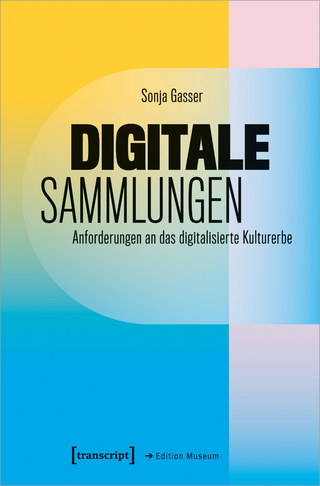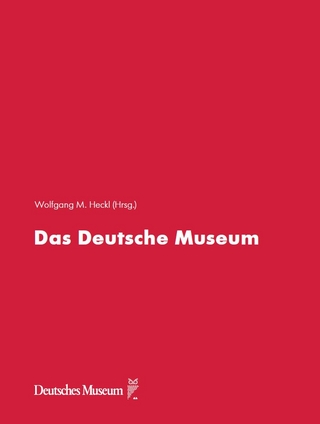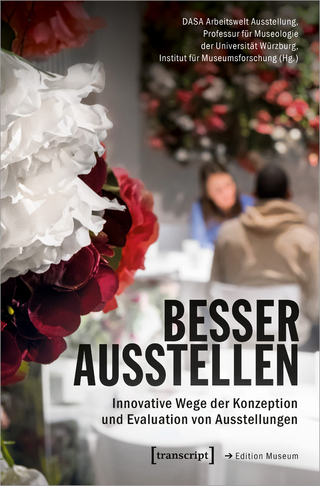
Microclimate for Cultural Heritage
Elsevier Science Ltd (Verlag)
978-0-444-64106-9 (ISBN)
Sections covers applied theory, environmental issues and conservation, practical utilization, along with suggestions, examples, common issues and errors.
Physicist. From 1969 at the National Research Council of Italy (CNR), Institute of Atmospheric Sciences and Climate, where his last position was Research Director. He retired in 2008, he now continues research and teaching as emeritus Associate. Since 1979, he has been lecturer of Environmental Physics and Physics for Conservation at the University of Padua, the Cignaroli Academy of Fine Arts, Verona, the Polytechnic of Milan. For ten years, he was the Co- Director of the European Doctoral Course “Sciences and Materials of the Cultural Heritage, of the European University Centre for Cultural Heritage, Ravello. His activities are mainly devoted to atmospheric physics applied to the conservation of the cultural heritage and to climate change. He has recovered and studied the earliest regular observations of the Medici Network (1654-1670) and a number of long-term instrumental series starting from the early 17th century. Similarly with written documentary proxies (e.g. chronicles, annals) over the last millennium: he reads fluent Latin, the official language of the Middle Ages and the language of scientific literature up to the French Revolution, Italian, French, English, Spanish, and ancient Greek. The possibility of reading original documents and books is very helpful in recovering data, but also in the interpretation of old recipes or scientific writings. He analyzed the sea level rise in Venice, over the last 500 years after the algae belt marked on the paintings by Canaletto, Bellotto and Veronese, who reproduced precise details with the help of a camera obscura. He was requested by the Holy Father John Paul II to improve the microclimate of Michelangelo's frescoes in the Sistine Chapel, and appointed by UNESCO for the Great Sphinx and Pyramid Plateau, Egypt, Thracian Tombs, the city of Nassebur and the Madara Rider, Bulgaria, all included in the World List of Cultural Heritage (WLCH). He also studied the Leonardo's Last Supper, Milan; the Uffizi Gallery, Florence; the Louvre and the Orangerie Museum, Paris; the Kunsthistorisches Museum, Vienna; the Orvieto Cathedral, and many other monuments. Active in standardization for cultural heritage, convenor of two working teams of the European Committee for Standardization (CEN) Technical Committee for Cultural Heritage, and vice-president of UNI-Normal (Italian Standardization Body). Member of various international scientific committees (e.g. European Commission, UNESCO, U.S. NAPAP) on the conservation of works of art, environment and climate. He wrote over 300 scientific papers and some books. He leaded many research projects, some fifteen of them funded by the European Commission Directorate General Research and Innovation, and the European Science Foundation (COST).
1. Microclimate and Atmospheric Variables 1.1 Microclimate 1.2 Air, Water Vapour, Perfect and Real Gases 1.3 The Internal Boundary Layer and the Viscous Layer 1.4 Coanda Effect 1.5 Atmospheric Variables and Parameters
2. Temperature: A Key Variable in Conservation and Thermal Comfort 2.1 Temperature: One Variable, Four Popular Definitions 2.2 Mechanisms of Temperature-Induced Deterioration 2.3 The Urban Heat Island 2.4 Temperature in a Building, a Room 2.5 Temperature in a Showcase 2.6 People’s Thermal Comfort and Discomfort 2.7 Is It Possible to Combine People’s Comfort, Conservation Needs, and Sustainability? 2.8 Planning Air Temperature Monitoring to Study Air–Surface Interactions and for Environmental Diagnostics
3. Theoretical Grounds for Humidity 3.1 Partial Pressure of Water Vapour 3.2 Derivation of the Latent Heat 3.3 Mixing Ratio of Water Vapour and Dry Air 3.4 Specific Humidity 3.5 Absolute Humidity 3.6 Relative Humidity 3.7 Dew Point: The Temperature of Condensation 3.8 Frost Point: The Temperature of Freezing 3.9 Wet Bulb Temperature: The Temperature of Evaporation 3.10 The Psychrometric Chart 3.11 Humidity When It Rains or Snows
4. Consequences of the Maxwell–Boltzmann Distribution 4.1 The Maxwell–Boltzmann Equation and the Distribution of Molecules by Velocities 4.2 Thermal Emission of Bodies 4.3 The Arrhenius Equation 4.4 Saturation Pressure of Water Vapour in Air 4.5 Relative Humidity and Mutual Distance Between H2O Molecules 4.6 The Liquid State and the Free H2O Molecules in It 4.7 The Raoult Law for Ideal Solutions 4.8 Ebullition and Freezing 4.9 An Additional Aspect of Relative Humidity 4.10 The Three Classes of Water Vapour 4.11 Conclusions
5. Physics of Drop Formation and Micropore Condensation 5.1 How a Curved Water Meniscus Changes the Equilibrium Vapour Tension 5.2 Derivation of the Kelvin Equation for Droplet Formation and Micropore Condensation 5.3 The Formation of Droplets in the Atmosphere: Homogeneous and Heterogeneous Nucleation 5.4 Bubbles 5.5 Micropore Condensation and Stone Weathering 5.6 Adsorption Isotherms 5.7 Freeze–Thaw Cycles
6. Humidity and Deterioration Mechanisms 6.1 Air–Surface Interactions and Environmental Diagnostics 6.2 The Equilibrium Moisture Content and Dimensional Changes in Wood 6.3 Mechanisms of Humidity Degradation in Paper and Parchment 6.4 Biological Habitat and Vacuum Cleaners 6.5 Molecular Layers of Water on the Surface of Metals and Glass 6.6 Chemical Forms of Decay 6.7 A Complex Structure: The Organ Pipe 6.8 What Is the Best Microclimate for Conservation? 6.9 Keeping Constant Relative Humidity in Rooms and Showcases 6.10 Condensation on Cold Surfaces 6.11 People as a Moisture Source 7. Atmospheric Water, Capillary Rise, and Stone Weathering 7.1 Atmospheric Pollution, Acid Rain, Rainfall, and Crusts 7.2 Mechanisms of Penetration of Rainwater and Evaporation 7.3 Evaporation From Damp Monuments 7.4 Capillary Suction 7.5 The Equilibrium Vapour Tension Over a Solution 7.6 Climate Cycles, Sea Spray, and Salt Damage 7.7 Deliquescence–Crystallization Cycles 7.8 Some Common Errors That Should Be Avoided 8. Rising Damp Treatment and Prevention 8.1 Measures to Counteract Rising Damp 8.2 Removing Causes 8.3 Hiding Effects 8.4 Damp-Proof Course With Physical Barrier 8.5 Damp-Proof Course With Chemical Barrier 8.6 Increasing Wall Temperature 8.7 Ventilation Within the Wall 8.8 Ventilating Outside the Wall 8.9 Dehumidifying Plasters 8.10 Active Electro-Osmosis 8.11 Passive Electro-Osmosis 8.12 Parapsychological Devices 8.13 Drying Damp Murals
II ATMOSPHERIC STABILITY, POLLUTANT DISPERSION AND SOILING OF PAINTINGS AND MONUMENTS 9. Parameters to Describe Air Masses and Vertical Air Motions 9.1 Equivalent Temperature 9.2 Adiabatic Gradients in Troposphere 9.3 Potential Temperature 9.4 Equivalent-Potential Temperature 9.5 Virtual Temperature
10. Atmospheric Stability and Pollutant Dispersion 10.1 Introduction 10.2 Vertical Temperature Gradients and Plume Behaviour 10.3 Effects Due to Topographic Horizontal Inhomogeneity 10.4 Urban Climate: Heat Island and Aerodynamic Disturbance 10.5 Dispersion and Transportation of Pollutants in a City 10.6 Wind Friction Near a Surface 10.7 Vertical Fluxes of Heat, Moisture and Momentum 10.8 Heat Balance at the Soil or the Monument Surface 10.9 Main Parameters Used in Measuring Atmospheric Stability and Turbulence 10.10 Plume Dispersion 10.11 Stability Classes to Evaluate Atmospheric Stability
11. Dry Deposition of Airborne Particulate Matter—Mechanisms and Effects 11.1 Introduction 11.2 Random Walk and Brownian Diffusivity 11.3 Brownian Deposition 11.4 Thermophoresis 11.5 Diffusiophoresis 11.6 Stefan Flow 11.7 Gravitational Settling 11.8 Electrophoresis 11.9 Photophoresis 11.10 Aerodynamic Deposition: Inertial Impaction and Interception 11.11 Adhesion of Particles to Paintings or Other Surfaces 11.12 Vertical Distribution of Particles in Still Air and Their Resuspension by Turbulence 11.13 How Soiling Develops 11.14 What Is the Most Appropriate Heating and Air Conditioning System to Avoid Soiling? 11.15 Inappropriate Positioning of Paintings 11.16 Uplifting of Giant Particles and Wind Erosion 11.17 Kinetic Energy and Sand Blasting
III RADIATION, LIGHT AND COLOURS 12. Radiometric Aspects of Solar Radiation, Blackbody, and Lamp Radiation 12.1 Radiation Emitted by Bodies and Effects of the Absorbed Energy 12.2 Radiometric Temperature 12.3 Angular Distribution of Radiant Emission of Bodies 12.4 Attenuation of Light in the Atmosphere 12.5 Daily and Seasonal Cycles of Solar Radiation on Monuments 12.6 Length of Shadow 12.7 Electric Lamps for Cultural Heritage 12.8 Problems Encountered in Exhibition Lighting 12.9 Optical Filters and Optical Fibres 12.10 Degradation of Works of Art Caused by Light 12.11 Photographic Flash Light 12.12 Phototrophic Organisms
| Erscheinungsdatum | 01.07.2019 |
|---|---|
| Verlagsort | Oxford |
| Sprache | englisch |
| Maße | 216 x 276 mm |
| Gewicht | 1590 g |
| Themenwelt | Kunst / Musik / Theater |
| Geisteswissenschaften ► Geschichte ► Hilfswissenschaften | |
| Naturwissenschaften ► Biologie ► Ökologie / Naturschutz | |
| Naturwissenschaften ► Geowissenschaften ► Geologie | |
| Naturwissenschaften ► Physik / Astronomie ► Angewandte Physik | |
| Technik ► Bauwesen | |
| Technik ► Umwelttechnik / Biotechnologie | |
| ISBN-10 | 0-444-64106-8 / 0444641068 |
| ISBN-13 | 978-0-444-64106-9 / 9780444641069 |
| Zustand | Neuware |
| Haben Sie eine Frage zum Produkt? |
aus dem Bereich


